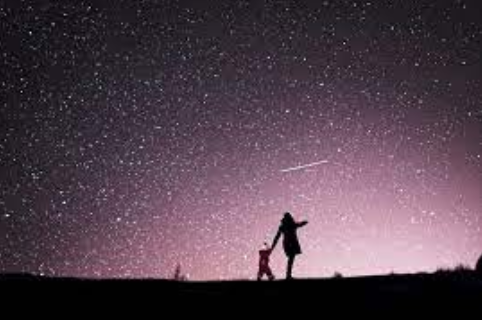A year of stars

Photo Credit: “TIME for kids” WESTEND61/GETTY IMAGES
With the arrival of the new year, many people are looking forward to experiencing new things and enjoying the natural beauty of our planet. With covid still a prominent issue, many plans are still ever-changing. However, one reliable area of the world is outer space. Here is a list of spectacular stellar events that will light up the new year.
Following the normal moon cycle, there will be twelve full moons in 2022. But, to make this year a bit more special, two of the twelve will be classified as super moons. These will take place on June 14th and July 13th. According to the Farmers Almanac, these will be titled “strawberry moon” and “buck moon.”
Some other extraterrestrial upcoming events will be solar eclipses. According to CNN, “Partial solar eclipses occur when the moon passes in front of the sun, but only blocks some of its light.” Such an occurrence is rare and spectacular to watch but only with sunglasses. The two expected partial solar eclipses will occur on April 30th and October 25th but due to the rotation of the earth, neither of them will be visible here at Broughton.
The next phenomenon that will happen this year is the Lunar eclipse. This happens when the earth, moon, and sun are perfectly aligned in a specific order that allows two shadows to be cast. In some instances, this turns into a “blood moon.” Two total lunar eclipses are expected for this year. The first will take place at 9:31 p.m. on May 15 and 2:52 a.m. ET on May 16. This can be seen in North America, so make sure to go outside! The next will be in the fall, taking place on November 8 between 3:01 a.m. ET and 8:58 a.m, but the moon will be set so the strength and clarity of this eclipse might not be ideal.
Continuing on, some meteor showers will also take place this year. The beautiful array of falling stars can be seen by anyone, but in order to view this event, a few steps should be made to get the best view. First, find an open space where you can clearly see the sky. Preferably this location should be away from street lights to avoid light pollution. Next, try to get there a bit early and avoid looking at electronics so your eyes can adjust to the dark. From there, you can most likely notice a few shooting stars dashing across the sky. This year there are eleven meteor showers expected. The first is in April and May, then two in July, one in August, one in October, three in November, and two in December.
Lastly, although it is not a star, the International Station Station is always something interesting to spot in the night sky. Being that it is typically the third brightest object in the sky when the orientation is right anyone can easily spot the aircraft from home. With just a quick google search, the exact location and route can easily be found including the times with the highest visibility. Make sure you are prepared because it does not last long!




